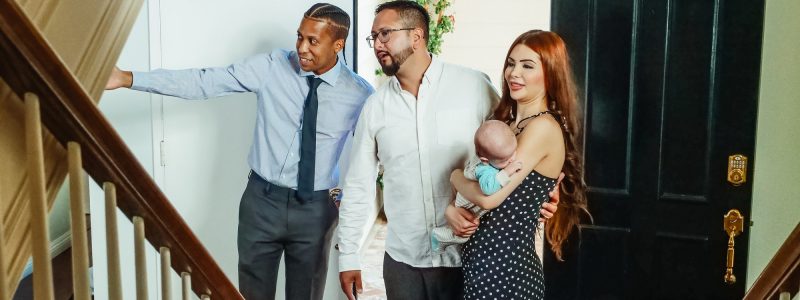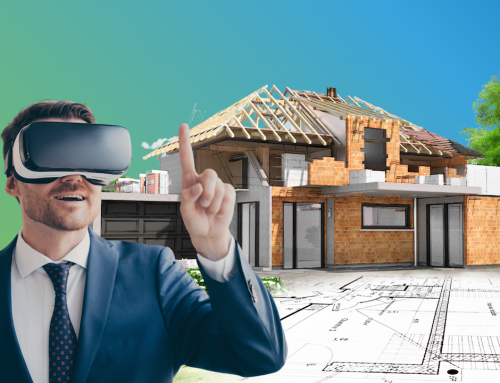The secret to a successful property transaction, whether buying or selling, is in the showing. This is not only the phase in which you take the client and show him/her the property, but it goes beyond. If the showing is done correctly, there is a greater possibility of achieving the goal of every real estate consultant and agent. An efficient showing is undoubtedly the basis of any transaction.
The showing includes the whole process before, during and after. From the moment our NATIVU advisor meets with the owner until the moment the transaction comes to an end. It is made up of several phases or procedures that must be carried out in order to achieve a truly efficient showing.
What is an efficient showing?
It is a documented visit with a qualified client into an specific property, and has four main elements:
Efficiency is based on the set of actions and processes that the real estate advisor performs to create a memorable experience for clients. The key is the preparation before the showing, the energy transmitted, listening to what the client wants and the follow-up to achieve the transaction.

What to do before a Showing?
The first step is to meet with the owner of the property so that he/she can give the real estate agent a tour of the property. In this tour, all the important information about the property should be obtained. Talk to the owner to explain how the property should be decorated and furnished so that it can be shown in the best way to the clients.
This will serve as preparation for the seller to proceed to depersonalize the house, for example, remove family photographs, arrange spaces and leave it in the best conditions for the visit stage with the potential buyer.
Always maintain documented communication with the seller. The best way is via email, because this is a more formal method and the back up is more secure. Information of each potential buyer that will visit the property should be sent to the seller with the full name and information that allows the seller to make sure that the identity is verified, and the money with which he will pay for the transaction is clean.
This step will also serve as prevention so that the same potential buyer does not visit the same property twice with a different agent or real estate consultant.

Finally, once the visit or showing has been scheduled, the information must also be sent by mail to the real estate company, in this case to Nativu, so that the showing can be added to the database.
What to do during the visit?
It is always recommended that the property owners are not at home during the visit so that the real estate agent can show the property. And if this is not possible, they should focus on other activities but not be part of the tour. While each scenario is being shown, ask visitors to comment on what they see.

At this stage, many questions should be asked to the buyer: why do you want a house of this style? why are you looking for in this area? how many rooms do you need? This will help to understand what are they looking for. If you know that the client asks for a large family room then during the visit focus on this space, this will help to engage the client.
When a good filter is achieved, it is not necessary to send many options to the client. You can share four options, knowing what they are really looking for. This will reduce the time invested in each visit and will prevent the future buyer from getting entangled among many options.
Visual language also has a great influence in the visit; the advisor must visualize and analyze the customer’s expressions to know if what the customer is asking for is really what he/she is looking for. For example, a client may want a modern house but when visiting such a style, his gestures show that it is not really what he wants.
What to do after the visit?
After the visit, it is important to share with the owner of the house, giving him/her the feedback on what was done in the house; the opinions of the potential buyers should be incorporated. Include all the details, even the negative ones. Write down comments such as if they liked or disliked the property, if they were looking for a property with more spacious social areas, etc. The advisor should take the information provided by potential clients as opportunities for improvement.
It is important to tell the owner at the first meeting that this feedback is not given by the real estate agent but by potential clients who are looking for a house according to the price and style of the property. In this evaluation include details about the property and price suggestions when the client considers that the value is higher than the market.
It must be followed up so that the potential buyer feels the interest of the real estate agent to finalize the transaction with the purchase or rental of the property.

The secret of efficient showing
The magic of a good showing is to not focused only on the visit but in the process before and after the visit. Getting a good filter of potential clients and qualified properties are two important factors to finalize a transaction of purchase or rental. An efficient showing is one that allows the real estate consultant to reduce the number of visits to finally achieve the real estate goal. This processes have a purpose to create an experience of pleasure in the client.
Taking into account this tips will allow real estate agents to have a connection not only with the potential buyer, but also with sellers for future transactions.






